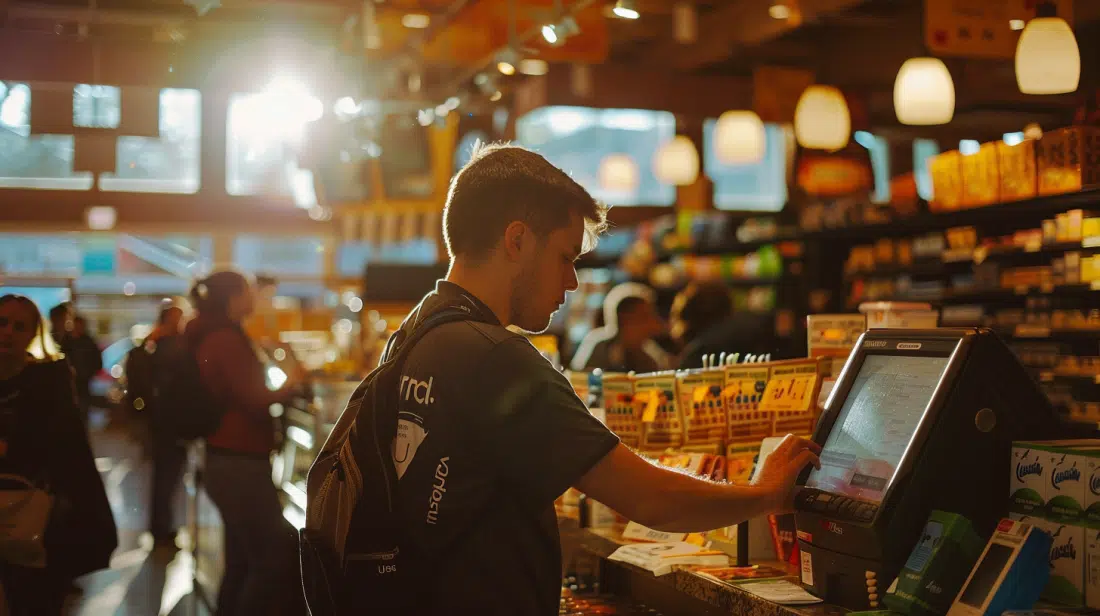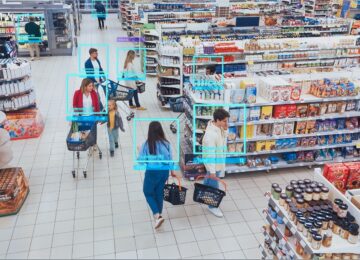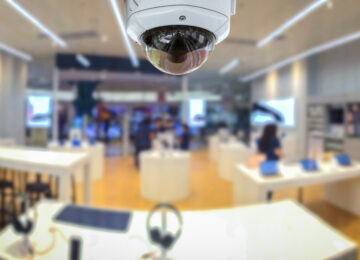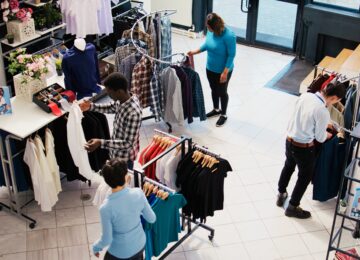Theft from Self-Service Checkouts in Supermarkets

They've been popping up in supermarkets for several years now: self-service checkouts are flourishing in our stores. Saving time for consumers and staff costs for businesses, everyone seems to be happy with them. Problem: so do thieves! Find out how some people steal from self-service checkouts in supermarkets.
Different Techniques for Supermarket Theft
As well as traditional checkouts staffed by checkout hosts or hostesses, most supermarkets are equipped with manual scanning systems: customers do their shopping and scan the products themselves as they place them in their trolley or bag. For several years now, automatic checkouts have been making their appearance: customers are completely autonomous and scan their products themselves at a self-service checkout. Some people find it tempting to try and steal products. There are many techniques available:
Concealment
This is the most common theft technique: hiding items so as not to have to pay for them. To achieve this, thieves have no shortage of imagination. It's not uncommon for people to conceal products in the bottom of their bag, or even in a false bottom or between two shopping bags, in their clothes, but also in children's pushchairs.
The metal bag technique
Malicious people can also decide to plan their theft in advance. One of the most obvious examples is the metal bag. The purpose of this type of bag is to prevent the shop's alarm systems from being triggered if the items stolen are fitted with anti-theft devices. By lining the inside of their bag with a layer of aluminium, a metal that blocks the transmission of signals emitted and received by the security gates, thieves pass through the automatic checkout without arousing the suspicions of the security guards, or triggering the slightest alarm. Similarly, a magnet placed in the bottom of any handbag or shopping bag will have the same effect of jamming electromagnetic waves. There are even small boxes specially designed to jam all kinds of signals, so they work in conjunction with an anti-theft device.
Forgetting
It's a strange paradox: the most stolen products are said to have been "forgotten" by customers. And yet this is shoplifting. While it is difficult, if not impossible, not to put all your items on the checkout mat without the cashier noticing, it's almost child's play with a self-service checkout. It's much easier to deliberately leave one or more items at the bottom of your shopping bag, especially if there are no locks.
The "banana trick" method
This trick consists of weighing an item on a fruit and vegetable scales and passing off the product as another thanks to the label. 5 kg of fine mushrooms can suddenly be transformed into 5 kg of carrots, which is a big difference in your wallet. It's a trick that wouldn't work at a traditional checkout, but is increasingly being tried by some people at self-service checkouts. There is a variation: some customers can weigh their fruit or vegetables, stick on the corresponding label and then add products after weighing. This is nothing less than shoplifting.
Changing labels
Another method used by dishonest people is to swap labels. It's not uncommon for people to stick a label of a more affordable product on the barcode of a more expensive item, such as a bottle of wine or a sought-after piece of meat. Here again, the technique may only work at an automatic checkout and not in front of supermarket staff.
Prosecution for Shoplifting
According to the law and article 311-3 of the Criminal Code, shoplifting is considered to be simple theft. It carries a maximum penalty of 3 years' imprisonment and a €45,000 fine. If the theft was preceded, accompanied or followed by clear-cut violence, the offender may be liable to up to 4 years' imprisonment and a €75,000 fine. Shoplifting will then be recorded on the offender's criminal record.
However, the security manager or shop owner may decide to settle the matter out of court. The person who committed the theft will have to pay for the items stolen and may be entered on the shop's internal file.
Intelligent Video Surveillance to Prevent Theft
Video surveillance is one way of reducing the risk of theft at self-service checkouts. However, conventional systems are unable to detect a product that has not been removed from a customer's bag. This is why intelligent video surveillance represents an effective solution in the fight against shrinkage due to theft. Coupled with the traditional cameras already deployed in the shop, intelligent video surveillance uses artificial intelligence to detect suspicious or abnormal behaviour in real time, particularly acts of theft.
At Veesion, we have developed software that uses algorithms to detect gestures of theft, even though it does not yet detect theft from automatic checkouts. It continuously analyses the video stream and sends a notification to shop and security managers in the event of a suspicious gesture. They can then decide whether or not to intervene.
It's a state-of-the-art solution that respects people's identity, because it doesn't rely on facial recognition.
Want to find out more about intelligent video surveillance? Get in touch with our teams today!
The most popular
Related news
Discover what Veesion can do for you. Do you have one or more stores?
Our team will contact you within 48 hours





